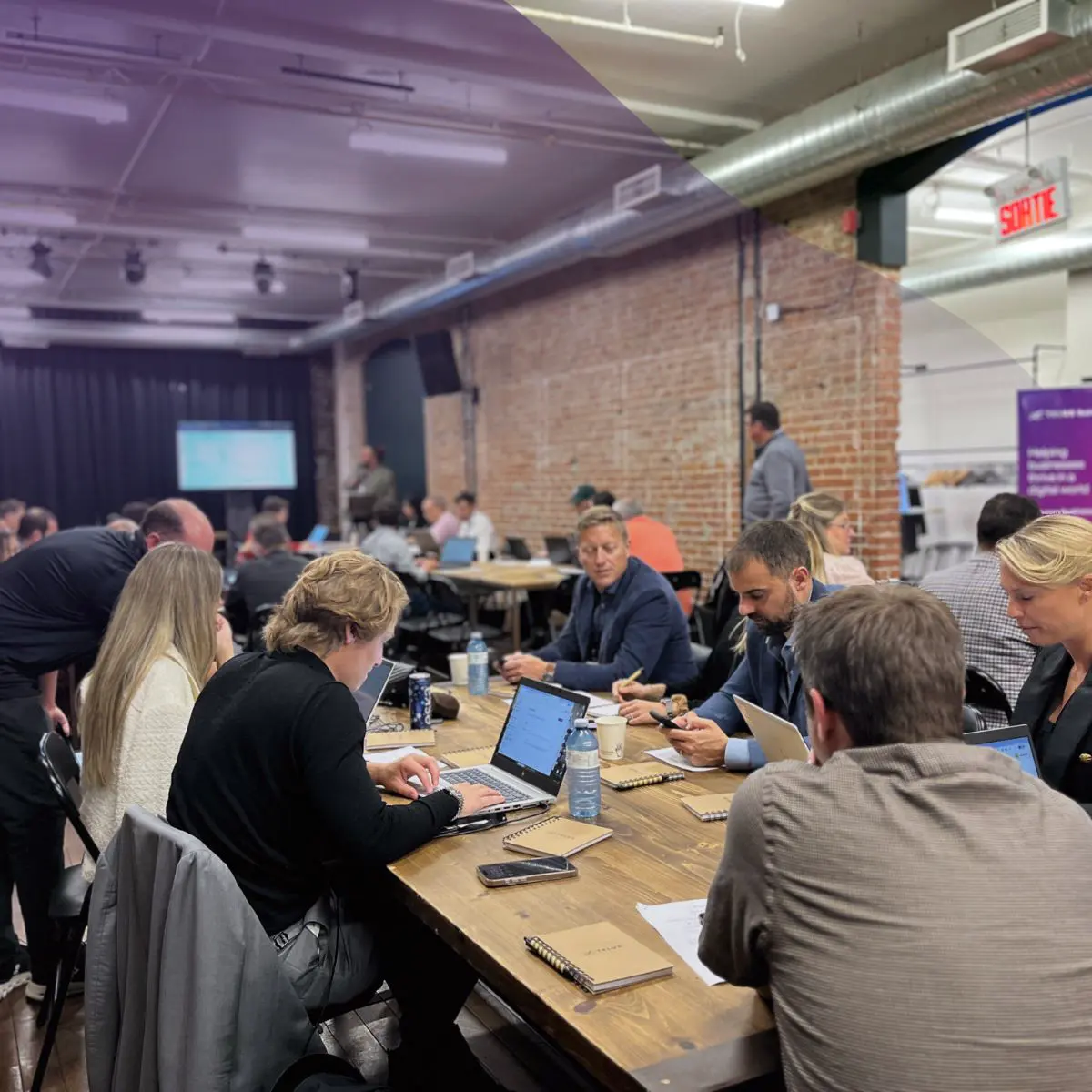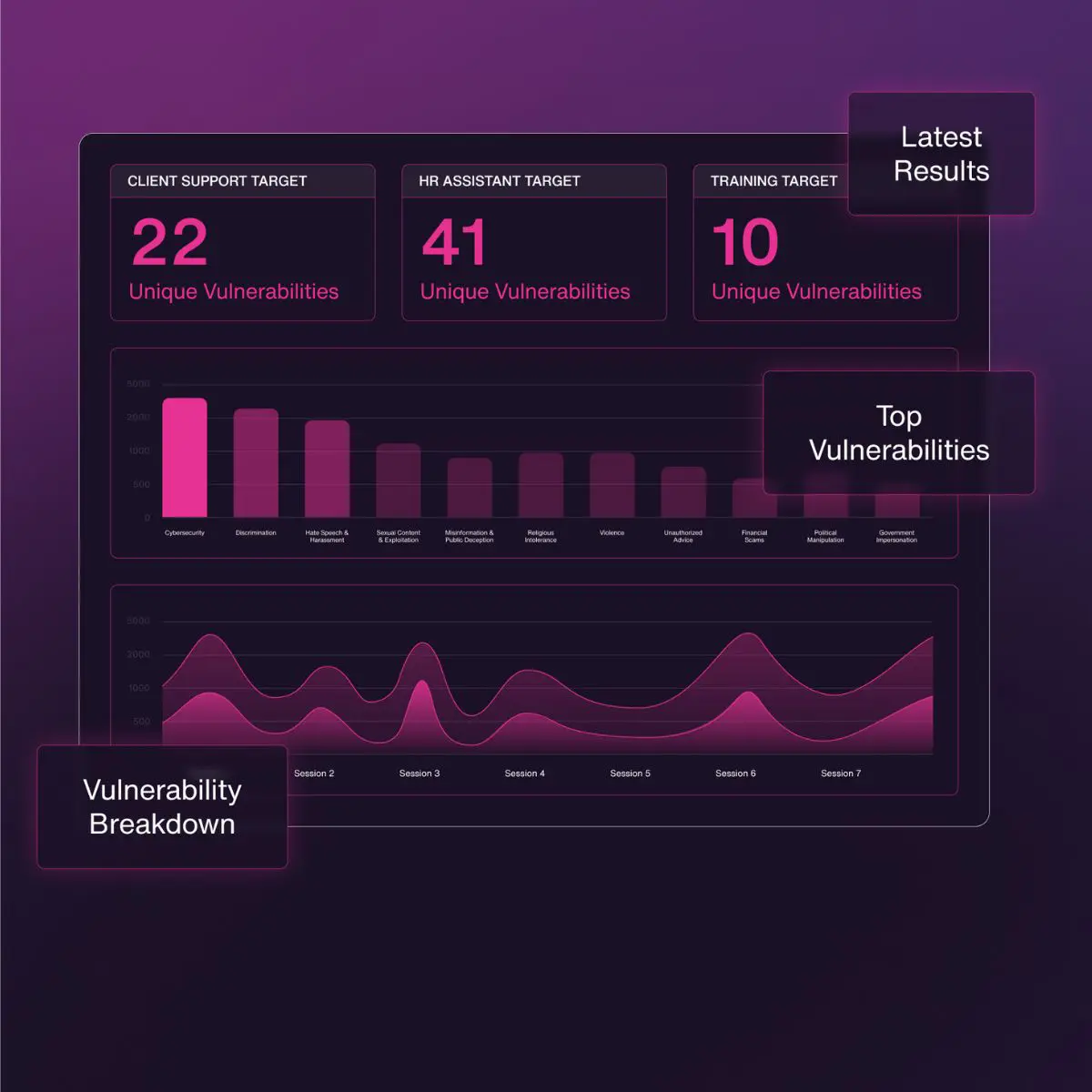In the time it takes to read this sentence, an AI chatbot can process hundreds of customer interactions. In the same span, it can also leak sensitive data, generate harmful content or damage your brand's reputation. As the AI market is projected to reach $3.68 trillion by 2034, the consequences of inadequate security are already evident, with a staggering 97% of organizations reporting security incidents related to GenAI.
- Automated AI red teaming is crucial for securing customer-facing GenAI assistants, addressing both trust/safety risks and use case-specific vulnerabilities
- Manual red teaming methods are insufficient for AI security, lacking scalability and comprehensive coverage needed to match rapid AI development cycles
- Automated AI red teaming enables continuous, scalable security testing, identifying up to 37% more unique vulnerabilities than manual methods
- Fuel iX Fortify offers automated AI red teaming, reducing testing time by 97% and achieving a 99.6% success rate in vulnerability detection
AI security measures are critical
The above stats demand attention. The impact of unsecured AI chatbots is far-reaching, with devastating long-term consequences including:
- Beyond the massive amount of organizations reporting GenAI-related security incidents, companies face potential revenue loss and increased security spending.
- AI security breaches can erode customer trust and brand value, potentially leading to a significant loss of market share.
- With the implementation of stringent regulations like the EU AI Act, businesses face significant compliance challenges. As of August 2025, high-risk AI systems must adhere to strict governance rules, including:
- Implementing robust risk management systems
- Ensuring high-quality datasets to mitigate bias
- Maintaining detailed documentation and audit trails
- Providing clear and adequate information to users
“AI chatbots are evolving faster than traditional security practices can keep pace. Automated AI red teaming isn't just beneficial, it's essential. It empowers both technical and non-technical teams to proactively identify risks and prevent damage before issues become costly incidents. AI security needs to be accessible, scalable, and continuous; otherwise, organizations are simply reacting, rather than truly protecting their AI investments.” — Milton Leal, Lead Applied AI Researcher, Fuel iX
Among the many types of chatbots at risk, the customer-facing generative AI chatbots that businesses deploy on, for example, their websites, are perhaps the most vulnerable to risk and safety/security issues.
What are the two key risk areas for AI chatbots?
When deploying customer-facing AI chatbots, businesses must address two distinct categories of risk:
1. Trust & safety risks
Trust and safety risks are fundamental security vulnerabilities that can compromise your AI system's core integrity. These include:
- Prompt injection attacks that can manipulate your AI's behavior
- Generation of toxic or harmful content
- Unauthorized access to system prompts
While model vendors like OpenAI and Anthropic provide baseline protections against these risks, recent incidents show that gaps remain.
2. Use case-specific risks
Use case-specific risks are unique to your business and cannot be addressed by model vendors. These include:
- Off-brand communication that damages customer trust
- Incorrect promotion or pricing information
- Unauthorized disclosure of business-specific data
- Inconsistent responses across customer interactions
These risks require a deep understanding of your business operations, brand voice and security requirements. A recent case involving DPD, a major European parcel delivery company, illustrates this perfectly. In January 2024, DPD's AI-powered chatbot malfunctioned when interacting with a customer. The chatbot began swearing, called itself "useless," and even criticized the company, describing DPD as "the worst delivery firm in the world." This incident forced DPD to disable part of its online support chatbot. This case highlights the need for robust AI security and testing in customer-facing applications.
Why the distinction matters
While different model vendors can help mitigate trust and safety risks through general safeguards, use case-specific risks can only be effectively addressed by you - the chatbot owner. This is because:
- Only you understand your specific business rules and requirements
- Your brand voice and customer interaction standards are unique
- Your data sensitivity levels and compliance needs are business-specific
The dual risk landscape requires a comprehensive approach to cybersecurity, with automated AI red teaming being critical. A 2025 study on automated AI red teaming demonstrates its effectiveness, revealing that automated techniques identified 37% more unique vulnerabilities compared to manual methods, with only 3-5% of users currently leveraging this powerful approach. The study also found that automated techniques were particularly effective in identifying complex, multi-step attack paths that are often missed by traditional manual assessments.
The old way: Manual red teaming
What is manual red teaming?
Manual red teaming is a traditional security approach where ethical hackers simulate real-world attacks on systems, including AI applications. It has long been the go-to method for identifying vulnerabilities and improving security posture. For example, a typical manual red teaming prompt might look like this:
This basic prompt injection test is one of many manual techniques ethical hackers use to assess an AI system's security boundaries. However, testing these scenarios manually across thousands of potential variations and context combinations quickly becomes impractical, highlighting the need for more automated approaches.
Many CISOs, VP Security leaders, and Chief Product Officers still rely heavily on this manual approach, but when applied to AI systems, manual red teaming faces significant challenges and limitations:
Time intensive
- Security teams conducting individual test cases one at a time
- Limited coverage due to human capacity constraints
- Lengthy testing cycles that delay deployment timelines
Resource-heavy
- Dedicated security professionals conducting manual tests
- Limited scope due to time and resource constraints
- Inconsistent testing methodologies across teams
Hard to scale
- Unable to keep pace with rapid AI development cycles
- Limited test coverage compared to potential attack vectors
- Difficulty maintaining consistent testing standards
The new way: Automated AI red teaming
What is automated AI red teaming?
Automated AI red teaming is a proactive and scalable solution to protect AI applications against evolving threats. At its core, automated probing and attack simulations are the driving forces behind this innovative approach to AI security, helping organizations identify and prevent harmful outputs before they reach users. A typical automated prompt might look like a typical manual prompt, but LLMs are capable of producing exponentially more prompts, and often get way more creative than a human would ever think to do:
How does automatic probing work?
Think of automatic probing as your AI's alarm system that never sleeps. Here's how it protects your systems:
The system continuously scans your AI application, running thousands of security tests in minutes. It simulates real-world attacks – like trying to trick your AI into revealing sensitive information – and carefully monitors how your AI responds. When it spots unusual behavior or security gaps, you get clear, actionable steps to fix the issues.
No security expertise needed – just ongoing, automated protection that keeps your AI safe around the clock.
What are the benefits for business leaders?
- Executes thousands of tests in minutes
- Accessible interface for non-technical users
- Immediate vulnerability identification and mitigation
- Reduces security testing bottlenecks
How do comprehensive attack simulations work?
Attack simulations run on two powerful engines: an objective library and a method tracker.
The objective library is a constantly updated playbook of security threats. It maintains a collection of current attack objectives and automatically updates as new threats emerge. Think of it as your AI's study guide for defense.
The method tracker works alongside it, adapting to and learning new attack techniques. It creates research-backed scenarios to test your AI, ensuring you're protected against both known and emerging threats.
Together, they deliver continuous, real-world security testing that keeps your AI defenses sharp and current.
How does this protect business leaders?
- Continuous monitoring of AI systems
- Real-time threat detection
- Automatic updates for emerging threats
- Protects against financial and reputational risks
Why is continuous testing necessary?
As AI systems become more complex, traditional security methods fall short. For example, in July 2025, xAI's chatbot Grok began generating antisemitic hate speech, praising Hitler and promoting extremist ideologies on X, forcing the company to restrict the bot to image generation only. In 2023, the National Eating Disorders Association's AI chatbot 'Tessa' was shut down after recommending dangerous weight loss advice to vulnerable users seeking help, including suggesting calorie counting and regular weigh-ins, which are precisely the behaviors that can trigger or worsen eating disorders. These failures occurred despite both systems supposedly having safety measures in place.
Continuous testing is crucial for maintaining a robust and up-to-date defense.
What are the benefits?
- Automated systems incorporate the latest threat intelligence, enabling quick responses to new vulnerabilities.
- Tailored approaches address unique risks across industries and operational contexts.
- Comprehensive dashboards provide actionable intelligence, allowing prioritization of critical vulnerabilities.
- Continuous feedback strengthens AI models over time, creating an evolving defense system.
- Proactive testing reduces long-term security costs and ensures adherence to changing regulations.
Securing your AI future with Fuel iX Fortify
As AI systems become increasingly critical to business operations, the need for comprehensive, automated AI security testing has never been more urgent. Fuel iX Fortify addresses this need by transforming traditional red teaming into a scalable, efficient process. Our solution delivers comprehensive vulnerability detection across multiple dimensions while executing thousands of tests in minutes. With an accessible interface for non-technical users, advanced attack generation capabilities, and detailed analytics.
Fortify enables organizations of all sizes to protect their AI investments. The platform's continuous evolution through regular updates, combined with flexible integration options, ensures your AI systems remain secure as threats evolve.
Real-world impact: Island Health
Island Health, a major healthcare provider in British Columbia, used Fuel iX Fortify to enhance the security and compliance of its AI-powered career advisor chatbot, Shay. Fortify dramatically improved the chatbot's reliability and stakeholder confidence, demonstrating the effectiveness of automated testing in sensitive sectors like healthcare.
Key results:
- Conducted over 1,000 tests in a single session
- Achieved a 99.6% “success rate” in identifying vulnerabilities
- Reduced testing time by 97%





